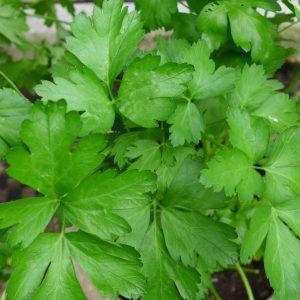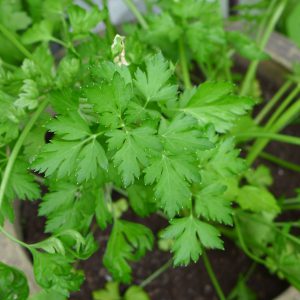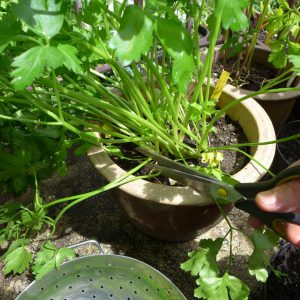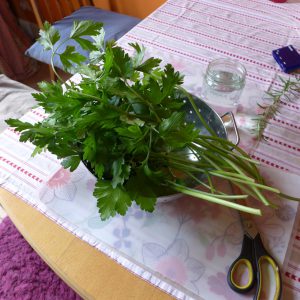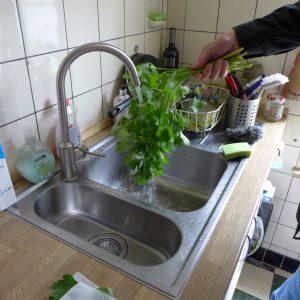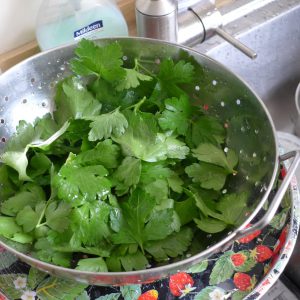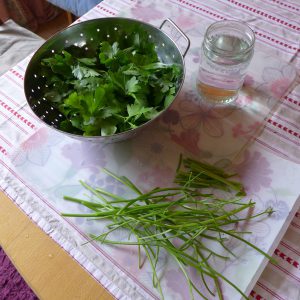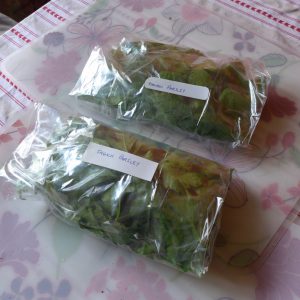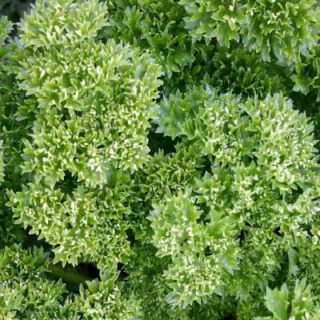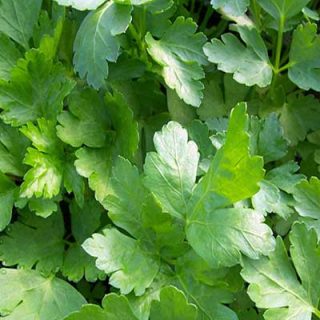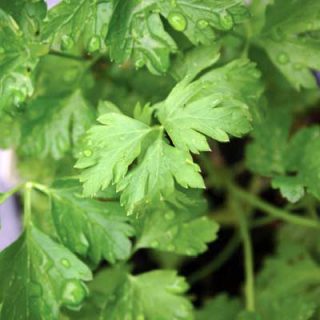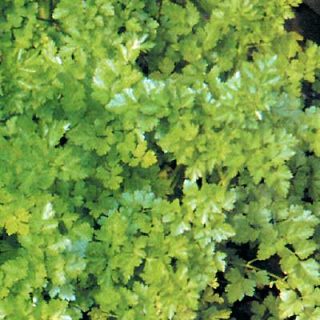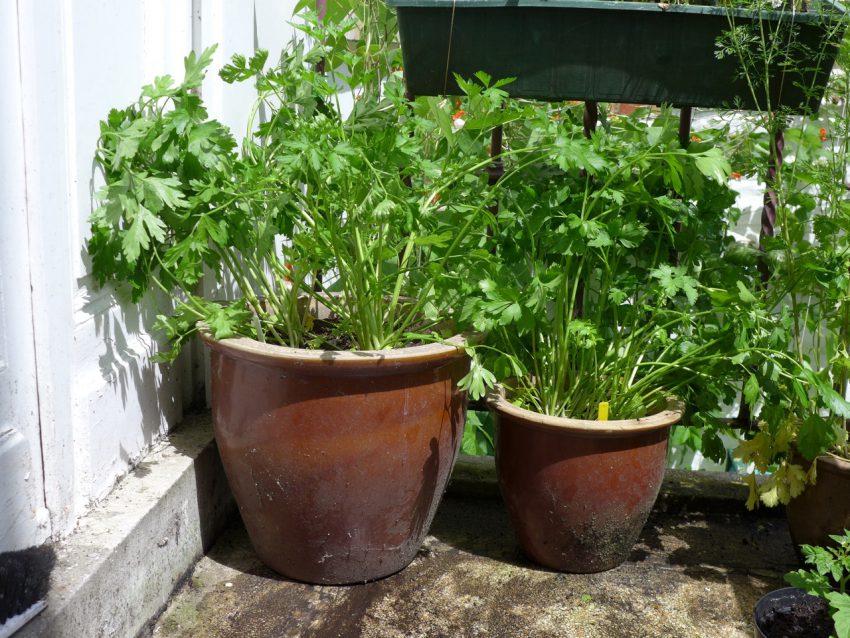
Parsley can be grown in soil or in containers. Notoriously difficult to grow from seed the plants, once established, provide an excellent addition to cooked and salad dishes. Two plants in the garden will provide for a household throughout the summer and into the fall.
Parsley is divided into two main types, curly and flat leaved. In general, the flat leaved varieties have a stronger flavour and are preferred for cooking, while the curly varieties are used as garnish. In this garden two types of flat leaved parsley are grown in containers.
When taking parsley use scissors and either cut away small bunches of leaves at stems or remove full stocks of the plant. Never cut more than one third of the plant at a time and remove older stocks first, cutting from the outside. Ideally keep leaves on stems and stocks when cutting.
Parsley leaves do require to be well washed in cold water. The leaves are inclined to hold dust and grit. By retaining the leaves on stems and stocks the washing process is easier than trying to wash individual picked leaves.
The stocks and stems of the plant are stronger in flavour than the leaves, ideal for making vegetable stock or using in cooking. For general use, separating leaves in small bunches with small stems separate from main stocks. Parsley will keep in the fridge for a week or longer.
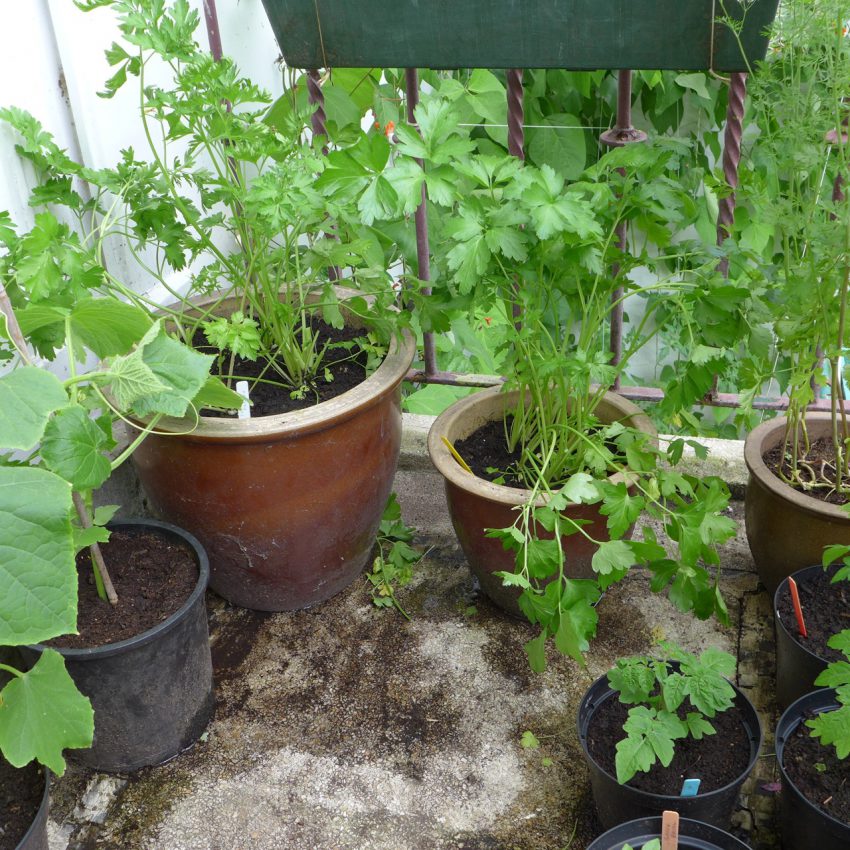
After cutting, parsley forms new leaves quickly enough enabling picking on a weekly basis or daily, depending upon use. This versatile herb can be added to a wide variety of dishes by the handful adding an earthy flavour. Known for its general health benefits parsley works well in the small garden.
